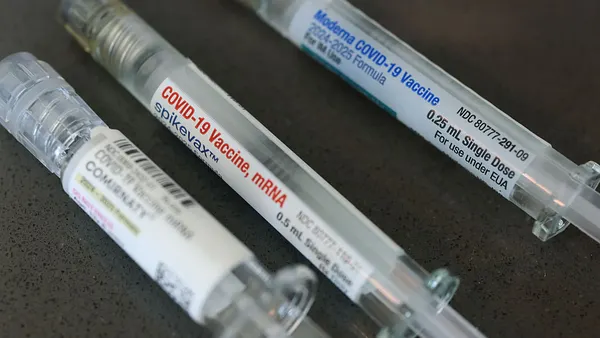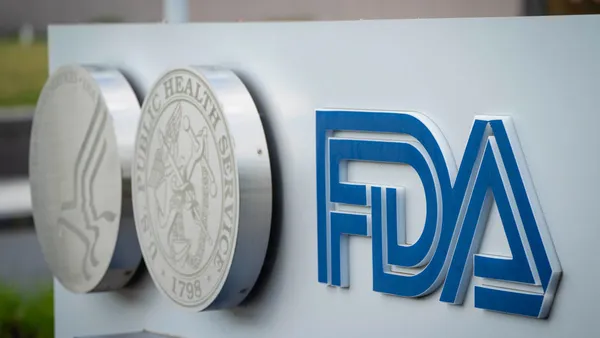Johnson & Johnson said yesterday it would drop $14.6 billion on neuroscience company Intra-Cellular Therapies, reflecting a strong start to M&A this year and potentially signaling a surge that some industry watchers have been forecasting for 2025.
After a period of light M&A last year in which no transaction outside of GLP-1 manufacturing rose above $5 billion, and a wave of upcoming patent losses, pharma companies may now have no other choice than to pry open the purse strings.
“We’re still going to see this loss-of-exclusivity wave, and that puts pressure on the majority of the industry to be vigilant with how they spend and how they will be acquiring,” said Arda Ural, Americas life sciences sector leader at EY, who pointed out that the industry is in an ideal cash position to start spending on deals.
And while analysts have been “cautiously optimistic” for at least two years regarding a dealmaking upswing, and that has led to what Ural calls “optimism fatigue,” this year may be different because the pieces are falling into place.
“The industry has the capacity to afford it, and so we have continued optimism that we believe is different from the optimism of the prior two years,” Ural said.
Crunch time for M&A
While 2024’s deals pale in comparison to bigger mergers in previous years, pharma companies showed a willingness to look at earlier-stage deals that could pay off more handsomely in the long run, said Roel van den Akker, pharmaceutical and life science deals leader at PwC.
“When all is said and done, 2024 was a reasonable year for M&A in pharma and life sciences — we’re definitely down year over year in value, but volume was pretty decent with a good number of deals,” said van den Akker. “People have migrated to smaller transactions with a backdrop that was kind of unpredictable, but there are still significant [revenue] gaps moving forward, and companies are going to have to lean more heavily into M&A to make up those gaps.”
Pharmas looking to jump those gaps need to “take their foot off the brake and a little more onto the gas,” van den Akker said, pointing to more potential activity in the $5 billion to $15 billion range.
“The view is that predictability and stability in the environment creates clarity for dealmakers."

Roel van den Akker
Pharmaceutical and life science deals leader, PwC
The strategy to transact earlier in a biotech’s R&D journey, along with the uncertainty of an election year, contributed to a year of smaller acquisitions with no deal rising above $5 billion, but that doesn’t mean pharmas have been lowering their standards, said Dan Chancellor, vice president of thought leadership at Evaluate.
“The ones that have been picked up are the ones that are really exciting, either best-in-class, first-in-class or offering new capabilities from a technological point of view, even though they’re earlier in the process,” Chancellor said.
He also noted the strategy could shift to bigger, later-stage acquisitions soon as the industry faces a wave of patent losses.
“Between 2025 and 2029, we’re seeing $250 billion of revenue at risk, which is a huge amount to replace, and that will require more mature companies to navigate that patent crush,” he said.
The more a company faces near-term revenue challenges associated with incoming competition, the more likely it will engage in larger deals to offset future losses, Chancellor said.
“These are companies whose internal R&D and clinical trial results have underwhelmed, the companies that are essentially facing that they are going to need to plug a near-term hole,” Chancellor said.
Smaller deals aren’t necessarily a bad strategy for now though, van den Akker said. With lower execution risk and a more focused agenda on differentiated science, pharma could afford to be more selective while looking at these earlier-stage companies.
“Dealmaking is very focused on where larger acquirers see differentiation, clinically or otherwise, to complement their existing product portfolios — but if there’s conviction in the science, there’s no reason why a deal wouldn’t exceed the $5 billion range,” van den Akker said.
Even so, Big Pharma has been on a divestiture kick this decade with several big companies like J&J and Merck & Co. spinning off major business units to focus on core therapeutic areas.
“The conglomerate days are a little bit over, and companies really need to be focused,” van den Akker said.
Still, pharmas with cash to spend have waited out the U.S. election for a period of more certainty and the return to a valuation threshold that’s more appealing for the type of risk they’re willing to take on, Chancellor said. There are no sure bets, however, in terms of contributing factors, and every case is unique.
“M&A is just inherently volatile, and we’re careful not to ascribe too much importance to certain things when you will always have bumps and troughs on a cyclical basis,” Chancellor said.
In line for some larger deals are the usual suspects in the therapeutic areas of oncology and immunology, as well as growing areas of metabolic and neuroscience treatments, Chancellor said. Genetic medicines like cell and gene therapies and RNA-based programs are also on the rise, and rare diseases “are here to stay as a dealmaking opportunity,” he said.
A biotech bolus
The previous biotech boom at the beginning of the decade, during a time of low interest rates, fed into a period where companies weren’t as hard-pressed to differentiate themselves to gain funding, van den Akker said. Investments were widely available and less discerning than they are now.
“We’re living with a bolus of companies that went public or got funding in the 0% interest years that did not have the levels of clinical differentiation or were going into a crowded class with a me-too innovation,” van den Akker said. “That’s a nasty by-product of a low interest rate in a long-duration industry where people look at risks and rewards and returns 10 or more years out.”
Out of necessity, as those funds ran dry and competition became fiercer, biotechs have been more focused and disciplined, “which is something to be happy about,” van den Akker said.
IPOs faced a similar story with a boom in the early 2000s, van den Akker said, and a more conservative market now. But 2025 should be a healthy year for IPOs in the overall markets. Tech will lead the way, with some biopharma companies in the mix, he said.
“We’re on the up and up, with quite a few companies sitting in the green room, waiting for predictability and a stable backdrop, because in the IPO markets, timing is everything,” van den Akker said. Whereas cash runways dominated the conversation during more meager years, 2025 could portend a bigger focus on growth, he added.
New administration, new outlook
A new U.S. presidential administration could make a difference in 2025’s M&A markets, with a potentially less stringent FTC and interest rate cuts that have already begun.
The FTC, which took a stricter stance on anticompetitive behavior in the last few years, could begin to loosen under President Donald Trump, Chancellor said.
“Common conventional wisdom suggests the Trump administration would be less interventional with the FTC, which means we might see deals that tend toward the larger size, where previously there might have been anticompetitive risks,” Chancellor said.
A new administration also means an end to the uncertainty of a hotly contested election year. Knowing the way forward is important as companies grow their businesses, said van den Akker.
“The view is that predictability and stability in the environment creates clarity for dealmakers,” said van den Akker, noting that healthy GDP and decent unemployment, plus a more predictable and neutral interest rate, could provide a degree of certainty that has been lacking in the last few years.
And with the potential for more interest rate cuts on the horizon, more biotechs could be willing to jump into the IPO pool as well, Ural said.
“There’s a very clear inverse correlation between the cost of capital and IPOs, and when that window opens, there’s more opportunity in the market for capital moves,” Ural said.


















